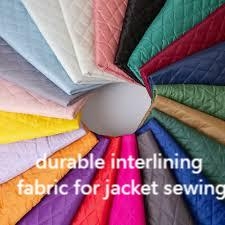-
Feed de notícias
- EXPLORAR
-
Páginas
-
Grupos
-
Eventos
-
Reels
-
Blogs
-
Funding
-
Developers
Interlining Expertise at INTERLINING-FACTORY.COM: Efficient, Eco-Conscious Production

In modern garment production, Interlining serves as a critical support layer that enhances both structure and aesthetics. By integrating Interlining into collars, cuffs, and waistbands, designers achieve crisp silhouettes and long-lasting shape retention. This hidden component works behind the scenes to ensure that each piece maintains its intended form, drape, and overall quality throughout repeated wear and laundering.
Improving Shape Retention
Support layers placed at stress points prevent fabric distortion and sagging. This reinforcement ensures that tailored edges—such as lapels and pocket flaps—retain sharp lines instead of softening over time. The result is a professional finish that upholds design integrity, offering end users garments that look pristine even after extensive use.
Enhancing Wearer Comfort
Despite its strengthening role, modern support materials remain lightweight and breathable. Air channels within the layers allow moisture to evaporate and heat to disperse, reducing clamminess and discomfort. Wearers enjoy a soft, unrestricted feel against their skin, merging the benefits of structured tailoring with everyday ease.
Sustainable Material Choices
Eco-conscious brands favor backing options made from recycled fibers or produced via low-energy bonding processes. These greener alternatives minimize environmental impact without sacrificing performance. By selecting such materials, manufacturers demonstrate responsibility while meeting consumer demand for products that align with sustainable values.
Versatile Application Range
This reinforcement technology adapts seamlessly to a broad spectrum of textile weights and weaves. Whether working with delicate chiffons, midweight cottons, or heavy twills, the bonding methods and adhesive profiles can be calibrated to match specific fabric characteristics. Such versatility reduces the need for multiple product lines, streamlining inventory and simplifying production.
Optimizing Manufacturing Efficiency
Precision-cut reinforcement sheets arrive in uniform thickness and tensile strength, minimizing trim waste and defects. Automated lamination equipment requires minimal manual adjustment, speeding up assembly-line operations and cutting labor costs. Faster quality inspections and reduced rework translate into improved lead times and lower overall production expenses.
Conclusion
By incorporating these strategic support layers, garment makers can elevate product durability, wearer comfort, and environmental responsibility in one comprehensive solution. Explore the full range of offerings and discover how they can transform your apparel line at https://www.interlining-factory.com/product/.
- Art
- Causes
- Crafts
- Dance
- Drinks
- Film
- Fitness
- Food
- Jogos
- Gardening
- Health
- Início
- Literature
- Music
- Networking
- Outro
- Party
- Religion
- Shopping
- Sports
- Theater
- Wellness

